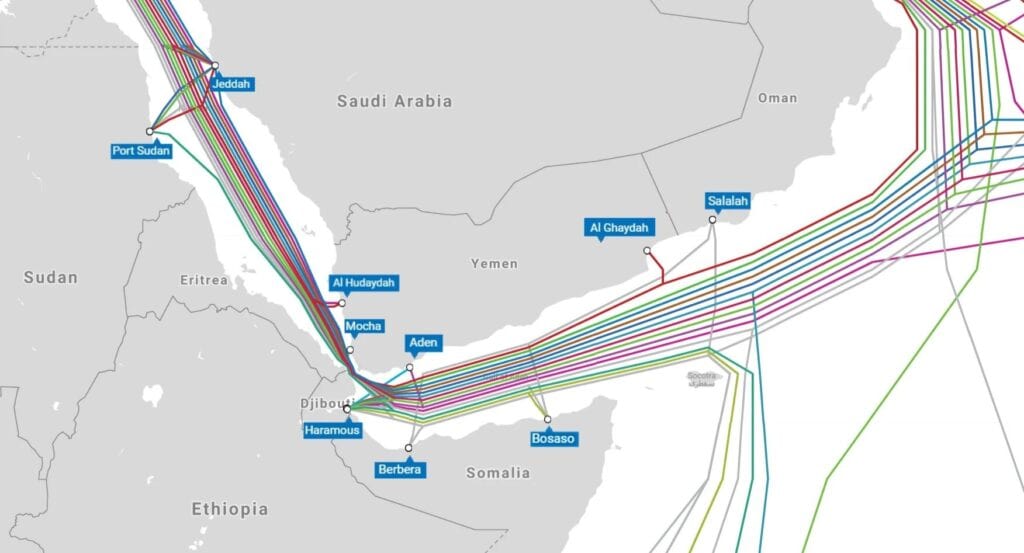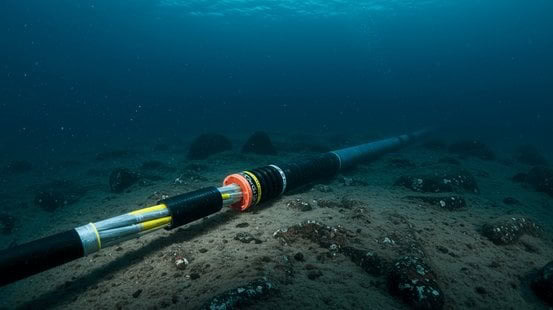The Red Sea Cable Cuts 2025 have caused major internet slowdowns across Pakistan, India, and the Middle East, impacting millions of users. On September 7, multiple undersea cables, including SMW4 (SEA-ME-WE 4) and IMEWE, were severed near Jeddah, Saudi Arabia, disrupting global data flow between Asia, Europe, and Africa.

As a result, internet users in Pakistan are experiencing slower browsing speeds, high latency during video calls, and delayed access to cloud services. This incident highlights how fragile the region’s internet backbone is — and why strengthening digital infrastructure is now more urgent than ever.
What Exactly Happened?
According to Reuters and Al-Jazeera, two major submarine cable systems — SMW4 (SEA-ME-WE 4) and IMEWE (India-Middle East-Western Europe) — suffered breaks near Jeddah, Saudi Arabia. These cables carry a huge share of internet traffic between Asia, the Middle East, and Europe, so the damage instantly caused service degradation across multiple countries.

Cloud providers like Microsoft Azure issued alerts warning of increased latency for users in Asia and the Middle East. Major telecom companies started rerouting data through alternative networks, but this has added delays due to congestion on backup routes.
Possible Causes of the Red Sea Cable Cuts 2025
The exact cause is still under investigation, but experts have suggested three main possibilities:
- Shipping Activity: Heavy maritime traffic in the Red Sea raises the risk of ship anchors accidentally damaging cables.
- Geopolitical Tensions: Some reports have raised concerns about deliberate sabotage, possibly linked to regional conflicts, although no group has officially claimed responsibility.
- Environmental or Natural Causes: Undersea earthquakes, landslides, or even strong storms can damage cable routes.
Regardless of the cause, the incident underscores the vulnerability of our digital lifelines to both human and natural risks.
Why This Matters: Impact on Pakistan and Asia
The Telecom industry in Pakistan has confirmed widespread slowdowns. Users reported difficulty streaming videos, online gaming lag, and sluggish business communications.
- Businesses & Remote Workers: Companies relying on video calls, cloud backups, and real-time systems are facing productivity dips.
- Cloud Services: Microsoft, Google, and other providers have had to reroute data, increasing latency.
- Financial Sector: Online transactions and fintech services may experience brief delays during peak hours.
The impact isn’t just digital — this disruption shows how economies are intertwined with undersea infrastructure, affecting trade, IT outsourcing, and even education.
How Repairs Are Carried Out
Repairing a submarine cable is a complex process. First, specialized ships must locate the exact point of the damage using sonar technology. Then, remotely operated vehicles (ROVs) lift the cable to the surface, splice and reconnect the damaged section, and carefully lay it back on the seabed.

This process can take several weeks or even months, especially in high-traffic zones like the Red Sea where ships must coordinate with maritime authorities and deal with weather or security challenges.
What Can Be Done to Prevent Future Outages
Experts suggest several steps to reduce the risk and impact of future disruptions:
- Build More Redundant Routes: Telecom providers should invest in additional cable systems and satellite links to avoid single-point failures.
- Better Cable Protection Zones: Governments can enforce stricter shipping lane regulations to protect cable routes from anchor damage.
Public Awareness: Educating businesses and individuals about backup plans — such as scheduling large downloads during off-peak hours — can help reduce congestion during outages.
Lessons for the Future
The Red Sea cable cuts serve as a wake-up call for Pakistan and the wider region. As our digital economy expands, we must enhance infrastructure resilience to prevent a single incident from disrupting millions of users.
In the coming weeks, we’ll see how quickly repairs are completed and whether this incident pushes governments and telecom companies to invest in safer, more robust internet pathways. Stay connected at Allymonews.

